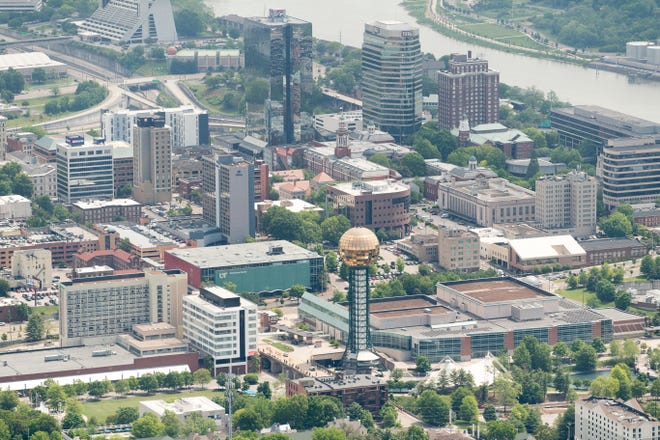Robert J. Booker
I like reading old publications that tout the progress of Knoxville up to that period. I recently looked at an interesting booklet edited by W.M. Goodman and titled “Souvenir History of Knoxville – The Marble City and Great Jobbing Market.” It is well illustrated and was published by the Knoxville Engraving Company. According to the businesses and features, it was probably published in 1908.
The opening pages tell us that a convention met here on Jan. 1, 1796, to write a state Constitution and that on June 1 of that year, Tennessee was admitted to the Union. Knoxville was the seat of state government until 1802. They also inform us that steamboat navigation began on the Tennessee River in 1826 and the East Tennessee and Georgia Railroad was completed in 1855. Those two events led to business development in Knoxville.
In 1839, William Baine Alexander Ramsey, the city’s first mayor elected by the citizens, received 49 votes while his opponent, James Park, got 48. The first major road was surveyed by Charles McClung in 1792 and ran from Knoxville to Campbell’s Station. It was about 30 feet wide. With a line of stagecoaches that began operating prior to 1859 and was called “Great Western Line,” the travel time between Knoxville and Washington, D.C., was advertised as “six days and six hours.” The fare was $44 dollars.
Hear more Tennessee voices:Get the weekly opinion newsletter for insightful and thought-provoking columns.

According to the publication, in 1890 the city’s population was 22,500 and in 1908 it was 85,000, with manufactured products amounting to more than $20 million a year. There were 40 miles of heavy track for electric railways running to all parts of the city and suburbs, and Knoxville had “an electric car service second to none.”
The city boasted of having the purest water in the country and plenty for all purposes. It had nine banks with deposits amounting to $12 million. It had the cheapest steam coal fuel of any city in the South. It had an exceptional record for textile manufacturing, and the jobbing business was about $50 million annually.
The photographs of the city’s eight- and 10-story commercial buildings were outstanding. They included the Arnstein Building, the Van Deventer Building and the Knoxville Banking Building. Gay Street was lined with stately structures with their canopies shading the sidewalks. One can see a streetcar, horse-drawn wagons and a few automobiles.
There are also pictures of the Riverside Woolen Mills, Knoxville Cotton Mills, the J. Allen Smith Flour Mill and other major enterprises. One can see photos of the homes of John Sevier, Dr. James Park and Parson Brownlow. There are scenes of men working in a marble quarry and felling trees in a forest.
Perhaps the most important entity was not mentioned until about the last page of the publication. The Knoxville Water Company was allotted some two paragraphs with a photo that showed the filtration plant and the standpipe. Its capacity at the time was 9 million gallons a day, and it was in the process of doubling that amount.
The ads in the book are from companies like the Journal & Tribune, the E.B. Mann Undertaking Company and the Market House. One of those still recognized today is the Knoxville News Sentinel.
Robert J. Booker is a freelance writer and former executive director of the Beck Cultural Exchange Center. He may be reached at 865-546-1576.








